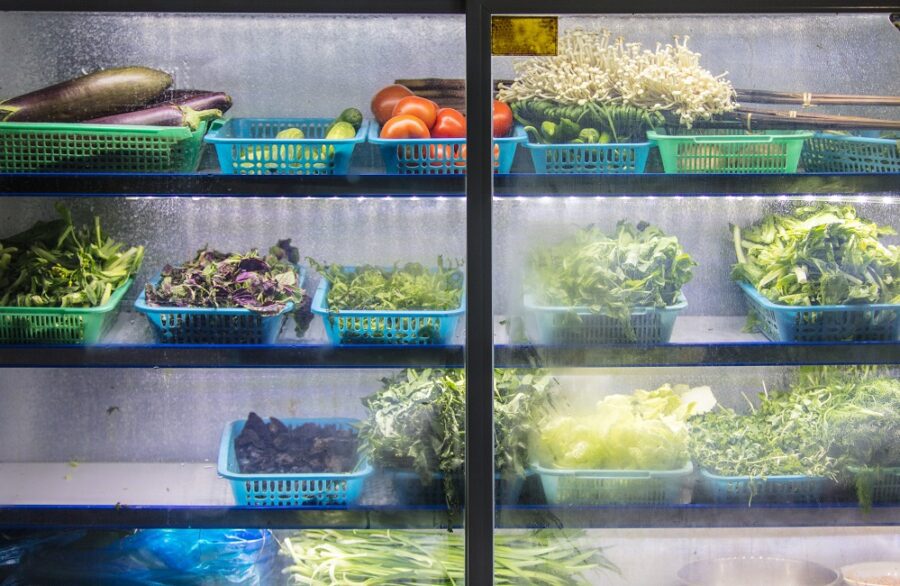
Distributor
Optimizing Operational Efficiency for Refrigeration Supplies Distributors
Written by: Parcel Pending
6 Min Read
Published: May 20, 2024
Updated: May 22, 2024
The HVAC/R (Heating, Ventilation, Air Conditioning, and Refrigeration) industry is evolving, and distributors must keep up with the latest trends to remain competitive. In this blog, we’ll discuss the current state of the HVAC/R market, share tips for how a refrigeration supply distributor can improve parts and supply distribution, and highlight how parcel lockers can transform operational efficiency for your business.
2024 HVAC/R Market Trends
The HVAC market is booming and is expected to grow from $62 billion to $95 billion by 2028.1 The industry is also experiencing significant changes due to new regulations and a growing emphasis on sustainability, especially as it relates to heating and air conditioning for home comfort. Distributors are adapting by adopting innovative technologies and solutions. Here are six key trends to watch in 2024.
#1 Regulation
New regulations are driving eco-friendly refrigerants and energy-efficient systems. The American Innovation and Manufacturing Act requires the U.S. Environmental Protection Agency to reduce the production and consumption of hydrofluorocarbons (HFCs) by 85% over the next 15 years.2 HFCs are common refrigerants with a high global warming potential, so reducing their use is crucial for meeting these sustainability targets.
#2 Workforce Shortages
The HVAC industry faces a significant workforce gap, with approximately 2,000 open HVAC technician positions in the U.S.3 Compounding this issue is the number of technical workers who retired early during the COVID-19 years.
#3 Greener Efforts
To meet the growing demand for green solutions, distributors should look to offer more eco-friendly products and implement more sustainable practices. One example is the adoption of heat pumps; these energy-efficient and environmentally friendly devices transfer heat to warm or cool spaces, using less energy than traditional systems and providing year-round climate control. The adoption of such solutions can significantly benefit both distributors and their customers.
#4 Immersion Cooling for Data Centers
Data centers, essential for modern computing, generate tremendous amounts of heat. Traditional air-conditioning methods for these facilities, therefore, consume massive amounts of water and energy. Immersion cooling, a process in which hot equipment is submerged in a thermal management fluid, offers a more efficient alternative. Two-phase immersion cooling (2-PIC), which operates in a contained system without needing pumps and external heat exchangers, is expected to grow exponentially, replacing air-cooling methods.
#5 HVAC as a Service
Some contractors are shifting away from the traditional one-time transaction and offering customers a subscription-based service. With HVACaaS (HVAC as a Service), customers pay a recurring fee for ongoing maintenance, repairs, and upgrades to their HVAC systems. For HVAC providers, this model offers a steady and predictable revenue stream. Moreover, the subscription model encourages providers to prioritize regular maintenance and proactive customer service, reducing the likelihood of costly breakdowns and emergency repairs by keeping their customers’ home comfort systems in top condition.
#6 Smart Technology
Smart HVAC systems are revolutionizing the industry by integrating Internet of Things (IoT) technology. These systems offer remote monitoring (e.g., indoor air quality), automation, and enhanced energy efficiency, catering to the growing demand for convenience and cost savings.
3D printing is also transforming the HVAC industry by enabling the efficient production of complex parts and reducing waste and costs. This technology allows for on-demand custom parts, minimizing inventory needs and enabling quicker, personalized customer solutions. 3D printing also supports sustainability by reducing material waste and using eco-friendly materials. As technology advances, it will continue revolutionizing how HVAC components are designed, manufactured, and distributed, ultimately benefiting the industry and its customers.
Improving HVAC/R Distribution Logistics
Given these challenges, optimizing efficiency in inventory management, supply logistics, and distribution is paramount. Here are the best practices for you to implement as a refrigeration supplies distributor to help your business tackle inefficiencies and pave the path to progress.
Embrace Warehouse Automation
Distributors are saying goodbye to manual processes and hello to streamlined operations. By implementing a state-of-the-art warehouse management system (WMS), they can track inventory in real time, reduce errors, and skyrocket productivity. For instance, industry giant Lowe’s Home Improvement tackled its supply chain efficiency head-on by opening strategic storage centers for off-season merchandise.4 This innovative approach led to lower transportation costs, faster store delivery, and higher margins.
Dive into Digital Transformation
The time to embrace digital tools is now. “In general, HVAC is a little behind the curve in digital transformation,” says Melanie Cochran, Vice President of Operations at Hawkins HVAC Distributors Inc., whose family has had roots in the HVAC industry for decades.5
To address this, the company launched HawkinsHVAC.com in the fall of 2021. Although the company keeps its sales figures under wraps, the impact of the new website is undeniable. Hawkins quickly saw online sales soar to 7-8% of total revenue. The average order value also jumped, exceeding $1,400 for a mix of HVAC equipment, replacement parts, and supplies.
Collaborate for Success
In a fragmented industry, there’s strength in numbers. Companies should consider merging or partnering with other players who offer value-added services. They can take inspiration from the recent partnership between OneRail and Parcel Pending by Quadient, which combines smart lockers with last-mile fulfillment solutions. This integration allows industrial distributors to provide efficient, same-day delivery options while freeing up time for associates to focus on other vital tasks.
Revolutionizing Distribution with Parcel Lockers
One innovative solution that can help refrigeration supplies distributors optimize their logistics is the implementation of parcel lockers. Smart lockers offer a range of benefits, including:
- Streamlined order collection – Parcel lockers can be fully integrated with existing processes and technology, allowing customers to collect their orders at their convenience, up to 24/7/365, depending on electronic locker placement. Johnstone Supply, a wholesale distributor serving professional heating, ventilation, air conditioning, and refrigeration contractors with annual sales of over $4.5 billion and 465 franchise locations, recently selected Parcel Pending by Quadient lockers so customers can quickly retrieve materials on their schedule.
- Reduced wait times – With parcel lockers, customers no longer need to wait in line to collect their orders, saving time and improving the overall customer experience.
- Enhanced efficiency – By automating the order collection process, parcel lockers can help distributors reduce labor costs, minimize errors, and free up staff to focus on other tasks.
- Oversized Lockers – Many refrigeration supplies are large and bulky; Parcel Pending’s Oversized Lockers can accommodate up to 90% of distributors’ branch locations or warehouse inventory. For instance, Ferguson, a leading distributor of electrical and HVAC products, recently installed Parcel Pending smart lockers and oversized lockers to meet customer demand. With over 1,500 locations across the United States, Ferguson wanted to provide contractors with convenient, self-service transactions for large and bulky items at high-volume sites.
As the HVAC/R industry evolves, refrigeration supplies distributors must adapt to stay competitive. By staying informed about the latest regulations, integrating sustainability efforts, optimizing the logistics processes, and embracing innovative solutions like parcel lockers, distributors can improve efficiency, enhance the customer experience, and position themselves for long-term success.
Ready to take your HVAC/R business to the next level? Speak to one of our parcel management experts today to learn more about how smart lockers can help.
Sources:
- Mordor Intelligence. HVAC Market Revenues to Reach USD 95.64 billion by 2028 – Market Size, Share, Forecasts, & Trends Analysis Report by Mordor Intelligence. www.globenewswire.com. August 1, 2023. https://www.globenewswire.com/news-release/2023/08/01/2716010/0/en/HVAC-Market-Revenues-to-Reach-USD-95-64-billion-by-2028-Market-Size-Share-Forecasts-Trends-Analysis-Report-by-Mordor-Intelligence.html
- Lile, Samantha. Upcoming HVAC Trends for 2024. www.motili.com. n.d. https://www.motili.com/blog/upcoming-hvac-trends-2024/
- Algood, Charles. Megatrends Making Their Move in 2024. www.hvacinformed.com. n.d. https://www.hvacinformed.com/insights/megatrends-making-move-2024-co-1567069171-ga.1700104508.html
- Young, Liz. Lowe’s Opens Warehouses to Stow Goods to Improve Seasonal Distribution Efficiency. www.wsj.com. March 8, 2023. https://www.wsj.com/articles/lowes-opens-warehouses-to-stow-goods-to-improve-seasonal-distribution-efficiency-13404404
- Demery, Paul. A regional HVAC distributor steps up with personalized ecommerce. www.digitalcommerce360.com. May 3, 2023. https://www.digitalcommerce360.com/2023/05/03/a-regional-hvac-distributor-steps-up-with-personalized-ecommerce/



